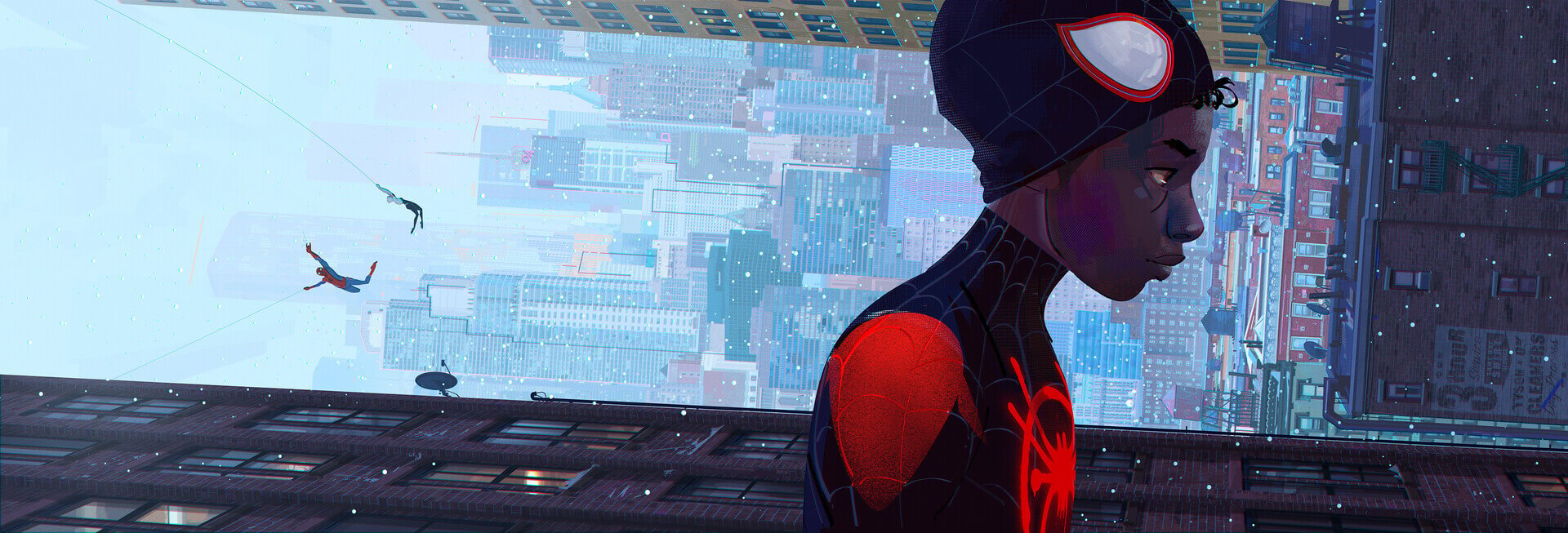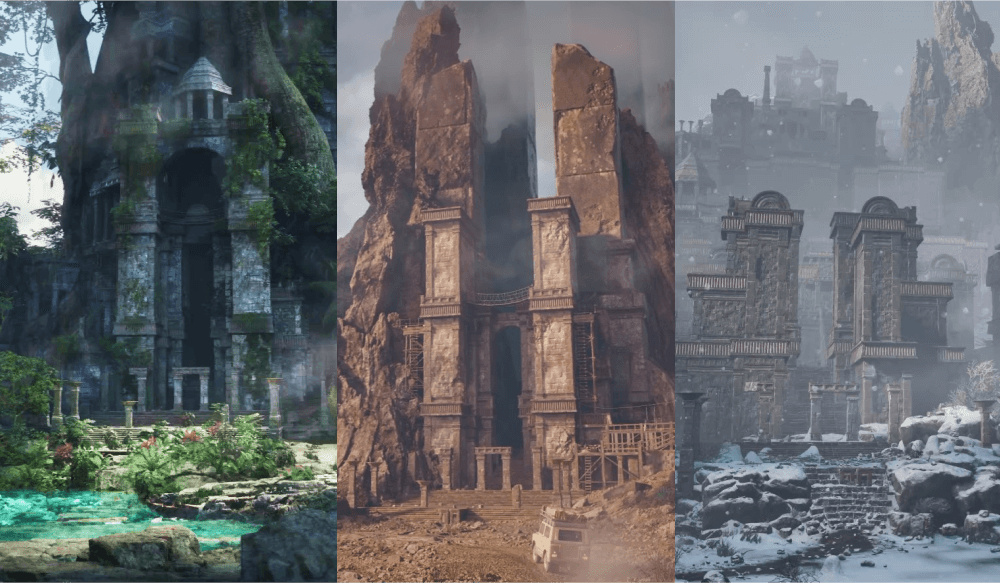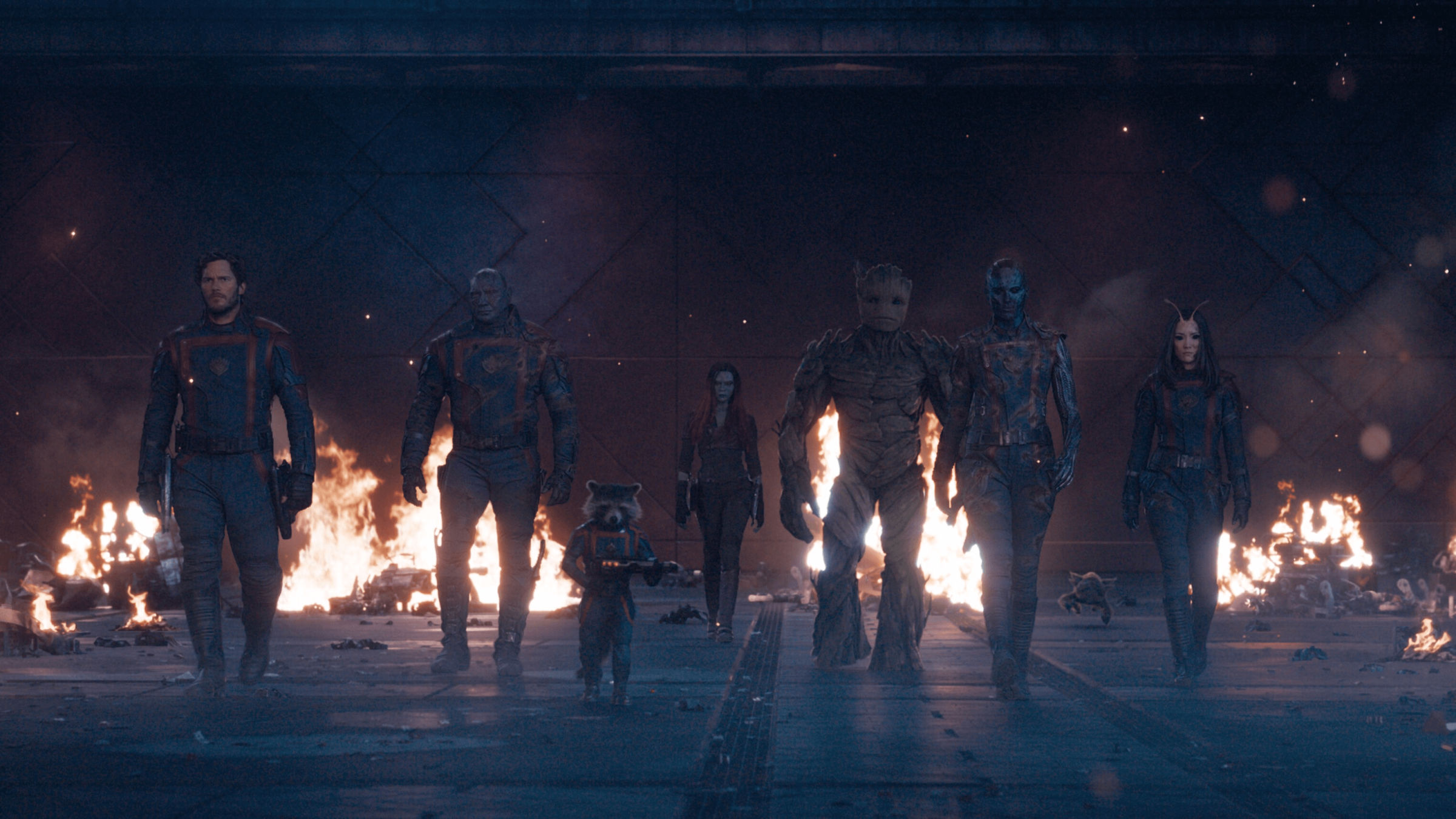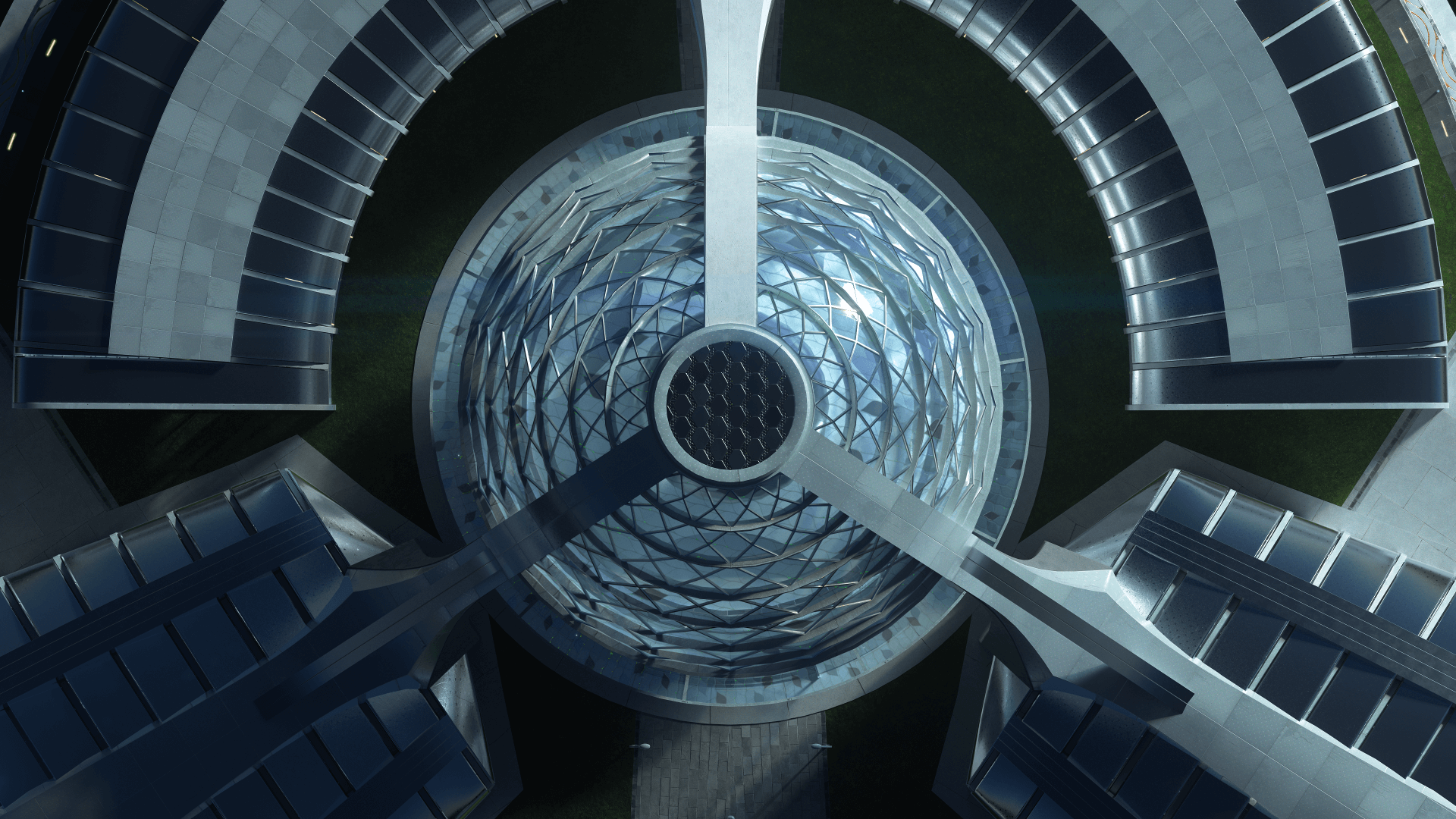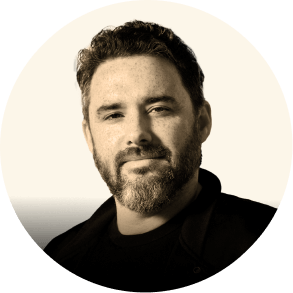
With a career spanning some of the most iconic animated films of recent years, Patrick O’Keefe is no stranger to the art of world-building. His work on films like Spider-Man: Into the Spider-Verse has captivated audiences worldwide, blending innovation with a unique visual style that redefines what’s possible in animation. As a judge for the Secrets of the Luminara challenge, Patrick brings his expert eye and creative insights to inspire the next generation of artists. I recently had the chance to sit down with him, where we explored his journey as a production designer, his creative inspirations, and his advice for aspiring artists.
Patrick shared his thoughts on the power of collaboration, the importance of individuality in an artist’s portfolio, and his excitement for the Secrets of the Luminara challenge. He also offered valuable insights for up-and-coming artists, drawing on his extensive experience in animation. Embark with us on a journey through Patrick’s world, where art, film, and boundless imagination come together in spectacular way!
Thanks for taking the time to chat with us, Patrick! We're thrilled to give our community a closer look into your journey and creative insights. There’s lots to talk about, let’s get started! You’ve had an impressive career, contributing to iconic projects like Spider-Man: Into the Spider-Verse and Across the Spider-Verse. Can you share a bit about your journey into the world of animation and what initially drew you to this field?
I began my journey as an artist scribbling in the pages of my older brother’s sketchbook, even as a child I was amazed that with a pencil I could create anything. I always enjoy drawing and painting as a hobby and knew that it was something I would love to do for the rest of my life if only I could figure out how. I started taking every drawing and painting class I could find. I sought out older students and professionals within the industry to try and get an understanding of how one ‘gets in’. After high school, I went to Sheridan College to study illustration. I knew that I loved drawing and painting, but was unsure how to connect it to my love of film.
After my second year of college, I ended up moving across the country but when I enrolled in my new school they did not have an illustration curriculum so I pieced together a degree in Animation, Film and Painting. As a student I was broke and hungry for work experience and I managed to get a summer job at an animation studio as a storyboard artist which I kept during my final year of school. It was hectic, I had to keep a schedule as to which classes I was skipping to make sure I did not get kicked out of school. As the school year was ending, the 2008 recession was starting and the animation industry was crumblin, my last day at the studio was slated to be the day of my graduation. Although I really enjoyed working in animation, I had student loans and needed a paycheque.
I was lucky enough to get a job in the Games industry where I worked for the next 8 years all while trying to get back into Animation. I worked nights as a visual development artist on commercials and small films. My job in the games industry eventually gave me the opportunity to move to California and get a green card. At a certain point I felt that my growth had stalled, I enjoyed the work I was creating, but still wished to be working in film. I decided it was now or never, I reached out to several studios and managed to get a gig in LA as a background painter on an animated TV series. I made a social media post thanking my colleges in the games industry for the incredible experience and was flooded with inquiries about my availability and interest in working with a variety of studios in a wide array of mediums. It was Sony Pictures Animation that truly stood out to me, the work being done there was different and exciting, I felt I needed to be somewhere that was willing to try new and different things. After a quick meeting in the lobby, I knew it was the place for me. I joined as a visual development artist under the promise that the Production Designer I was working for would teach me how to follow in their footsteps. My opportunity had come, and I was going to seize it.
As a Production Designer, you play a pivotal role in shaping the visual style and atmosphere of a film. How do you approach the process of creating a cohesive world that resonates with audiences?
Storytelling, in my opinion, is at it’s core and emotional transference from one person to another. More So than morals and themes it is about making someone feel how the storyteller feels. My exploration always begins with the question ‘what are we trying to make our audience feel?’. I then look to my own life and try to find times in which I had similar emotional experiences. Once that emotion has been established it becomes my guide to all the artistic decisions I will make. Using all the tools of visual communication; shape language, value, colour, lighting, etc I can construct and bend a world to help deliver that emotion to our audience. Oftentimes really cool ideas will emerge during the process of creation, but as the Production Designer I must curate the work that is being done to ensure we stay on our emotional target. It can be easy to get distracted and one must stay vigilant to the goal or else the whole project can lose its identity.
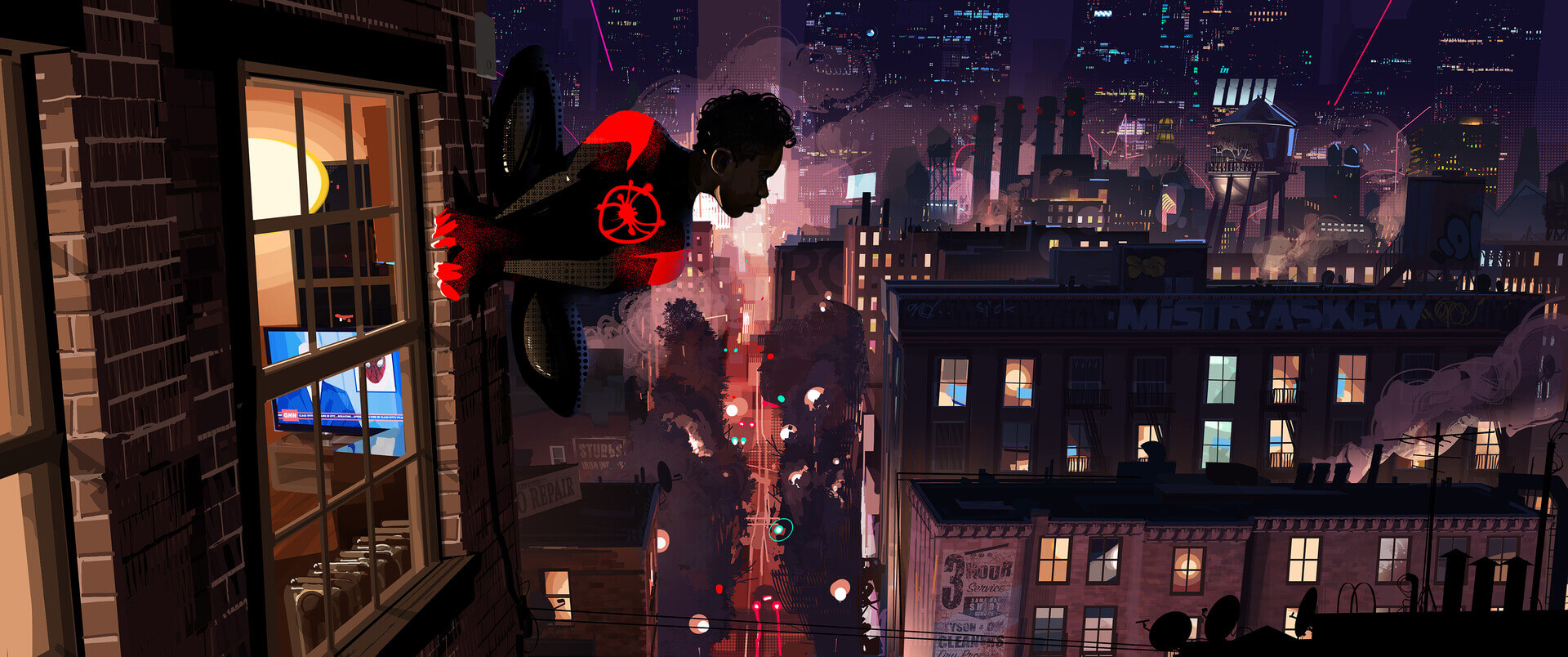
Having worked on projects that push the boundaries of animation, like Spider-Verse, what do you find most exciting about the current direction of animation and the role technology plays in it?
The artform of animation has always been steeped in experimentation and invention, and I believe it is this relentless pursuit of innovation that still makes the greatest films today. As a society we are inundated with visuals, we have access to every film ever made and as such any new film that hopes to stand out will need to be bold in every aspect of its execution.
New software like Unreal, Blender and Procreate Dreams as well as the ubiquity of powerful hardware has really started to level the playing fields from big studios to indie filmmaking. I am excited that this level of power is now available to the average filmmaker and that their stories can be told. I am looking forward to a resurgence of independent animation filmmaking, that by the nature of the diversity in filmmakers will lead to pushing the boundaries of the medium.
Your portfolio includes work across various genres and styles. What inspires you to explore new artistic directions, and how do you decide which projects to take on?
Every story offers the audience a new point of view as it is an expression of one’s own personal journey. I find myself most interested in the unique ways to visualize that journey. As film makers we are given the opportunity to create something of our own, how could it ever be like something else? I look for projects that embrace this ideology and are trying to explore a story that is new and as such, a project that requires a new approach.
As someone who has transitioned from concept artist to production designer, what aspects of your role do you find most fulfilling? How does working collaboratively with a diverse team of creatives continue to inspire your work?
I love art and films -- to spend my days drawing, painting, and designing films is my dream. When I became a Production Designer, I transitioned from making concept art to actually making the film. A film is too large of an undertaking for any single individual, it is the work of hundreds of people, and collaboration is the key to success. The daily collaborating with all the brilliant, interesting, passionate, and sometimes crazy, artists is by far the most enjoyable part of my job. To be part of a team that is all working together for a singular goal is beautiful and something I cannot get enough of.
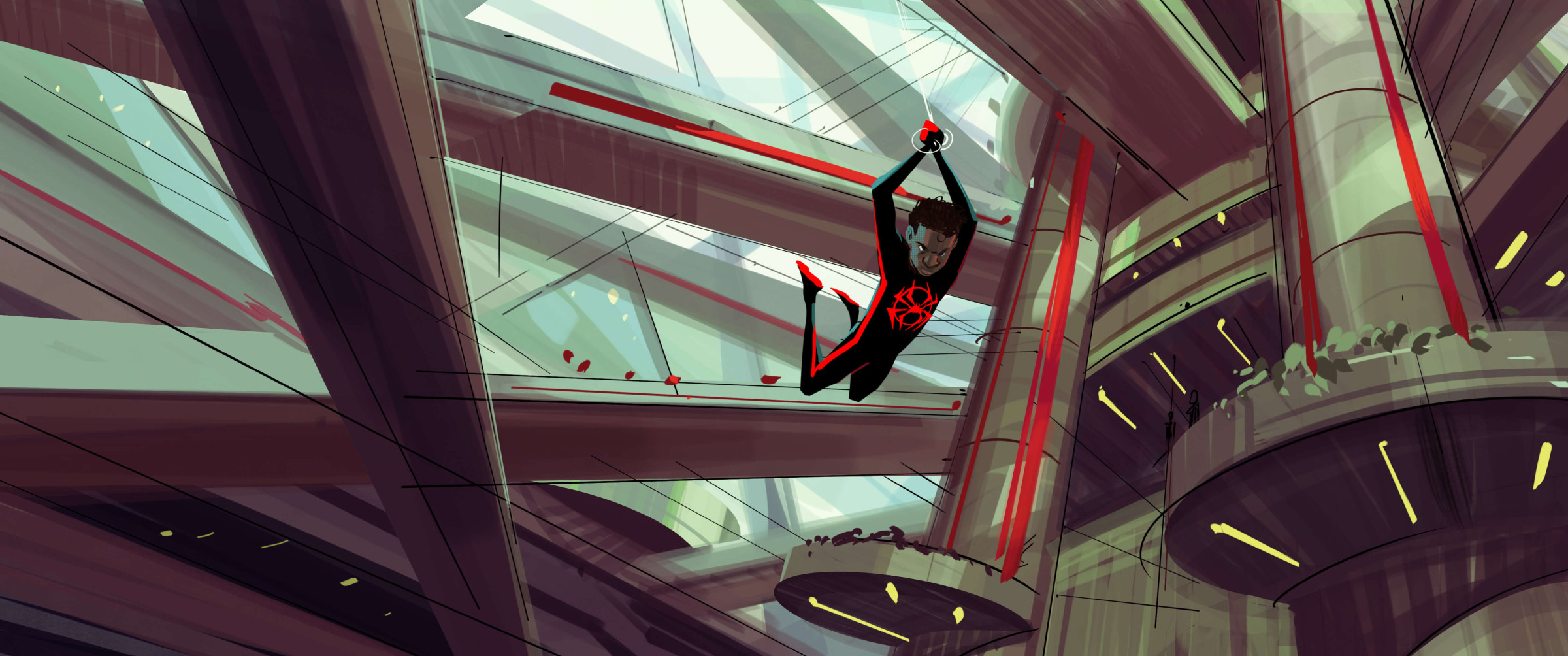
Beyond technical skill, what are the unique qualities or perspectives that catch your eye in an artist’s portfolio? How important is an artist’s individual voice when it comes to building a career in film and animation?
Typically, when a portfolio comes across my desk it is from someone who has strong fundamentals and understands form, lighting, materials, and design, but the thing that makes an artist stand out is when I can get a sense of who they are and what their point of view is. At a certain level, everyone is great at drawing and painting, but it is our taste and how we look at the world that makes us unique. I am always looking for the individual who has a new or different perspective on the world because they are the one who will create something we’ve never seen before.
Breaking into the industry can be daunting. What steps or approaches do you recommend for aspiring artists to not only get a foot in the door but also make meaningful connections and establish themselves in a competitive field?
Cast a wide net with the type of work you are looking for and apply everywhere. Contact artists that have the job you want and speak with them, not just the leads/art directors but the artists themselves. Chat with them and learn how they got where they are and learn what you do not know about the job. Too often, artists that are starting their career ask the industry leaders these questions, but not those who just entered into the workforce.
Looking back on your career, what’s one piece of advice you wish you had received as a young artist starting out?
Stack your cash! You just got out of school, probably have some student debt and have been living that broke artist life, and now you have a decent paycheck. Sure, go buy yourself a new pair of shoes or take your partner out for a nice dinner, but pay down that loan, and start a savings account. This industry is all about peaks and valleys, having cash in the bank is a moat protecting you and yours. It will help you weather the storms between gigs and also give you the freedom to say no to work while waiting for your dream gig to come along.

You’ve mentioned the importance of personal perspective in an artist’s work. Could you share more about why you believe this is essential, and how artists can develop and convey their unique point of view within collaborative projects?
The ability to put themselves into the work regardless of the genre, theme, or concept. Whatever it is about who you are that makes your point of view unique is what makes you an artist. It is not about pretty pictures and slick rendering, it’s about a commentary. Learn who you are and what you want to say.
As a judge for the Secrets of the Luminara challenge, what aspects of exploration and storytelling are you hoping to see from the community?
I am excited to see the journey these brave artists take as they explore the limitless powers of the Luminara. What could be so powerful that it needs to be so protected? What happened to those who created it? What is too much for them to control? Is it a gift or a curse? To venture into the unknown and discover the secrets of the past is in every explorer’s heart, but know this -- power is fragile, and a tool can become a weapon against oneself.
What’s your favorite mythical adventure movie, game, or TV Show?
I LOVE me some Indiana Jones -- the action, the adventure, the supernatural, the characters, the comedy -- but more than all that, I love the childlike sense of wonder. Indy knows it all, but his worldview is constantly redefined by discovering what he thought was impossible. For me, that is what creation is all about, we have a curiosity that leads us to discover something that changes who we are.
It’s been a pleasure hearing about your journey through the animation world and your approach to creating captivating, immersive worlds, Patrick! Your insights on embracing collaboration and individuality bring invaluable guidance to aspiring artists in our community. We’re honored to have you as a judge for the Secrets of the Luminara challenge and are excited for you to experience the worlds from our talented KB3D community. Thanks again for taking the time, until next time, happy KitBashing!
Interview conducted and article written by Carmen Moreno.

